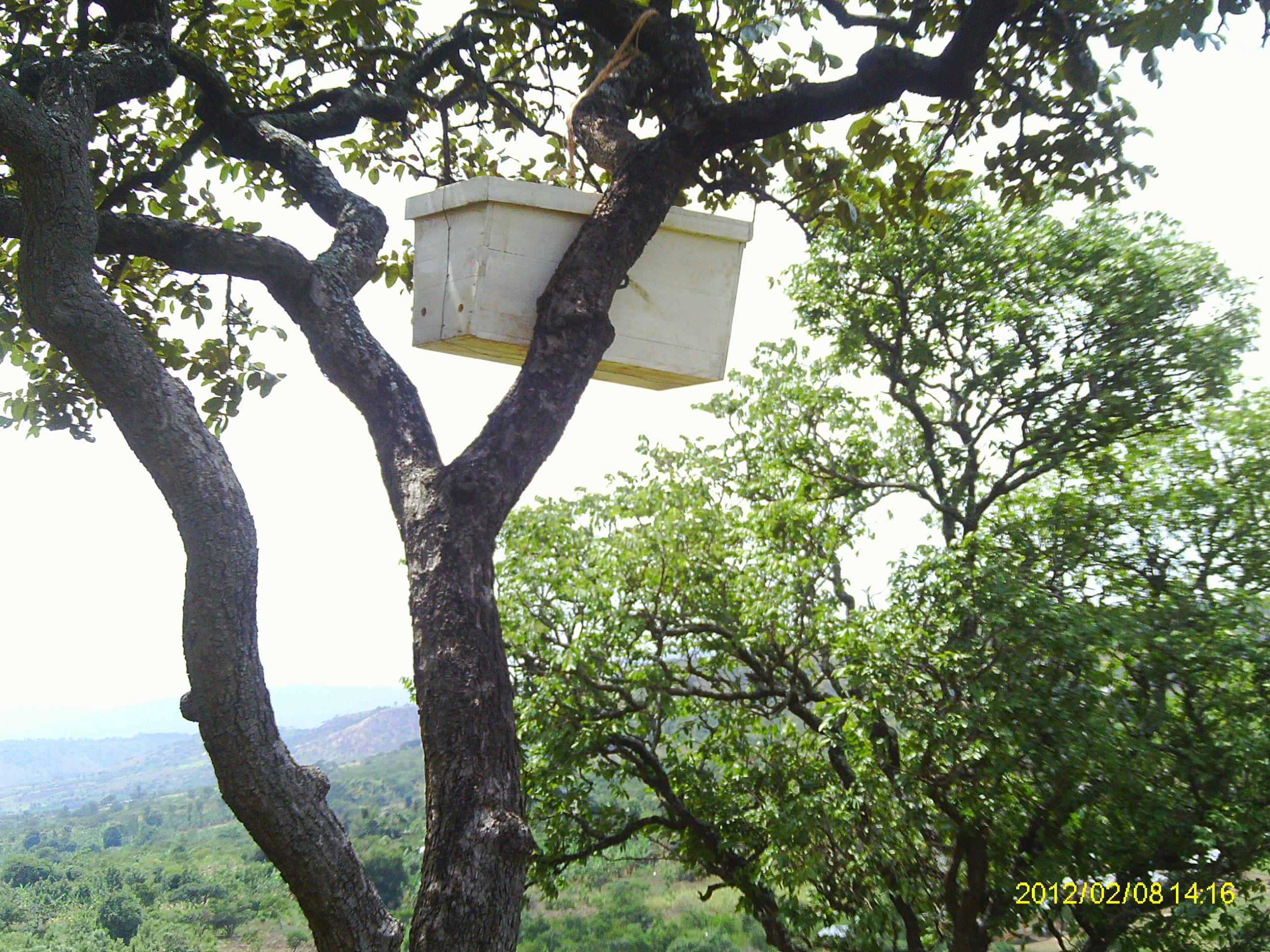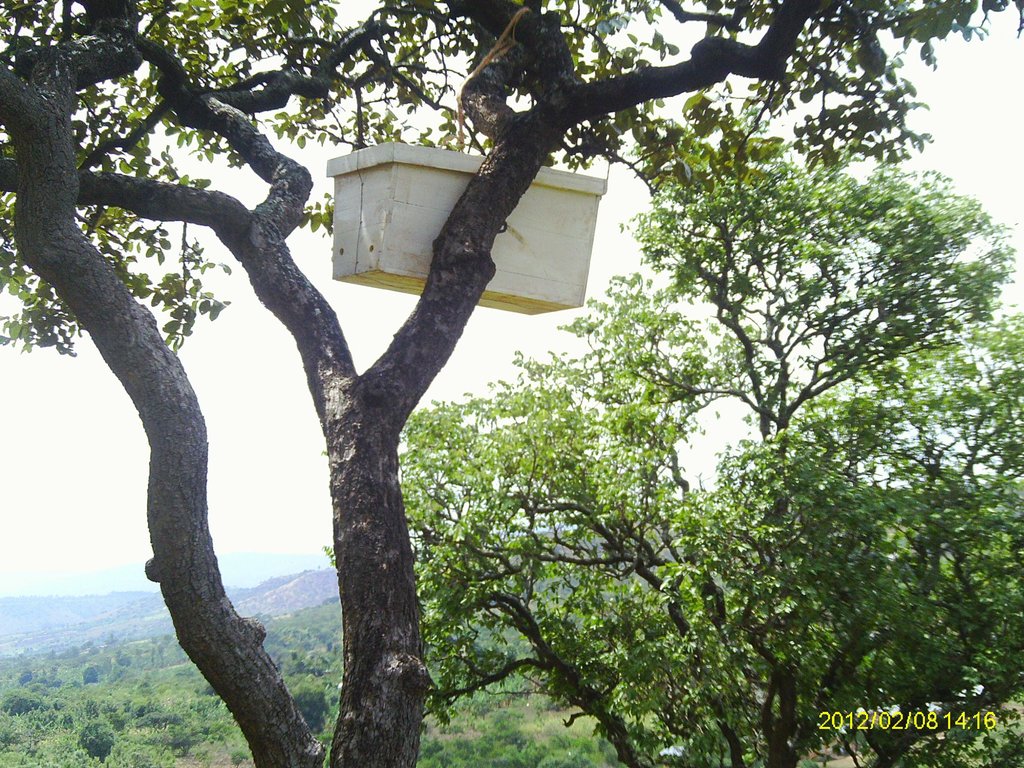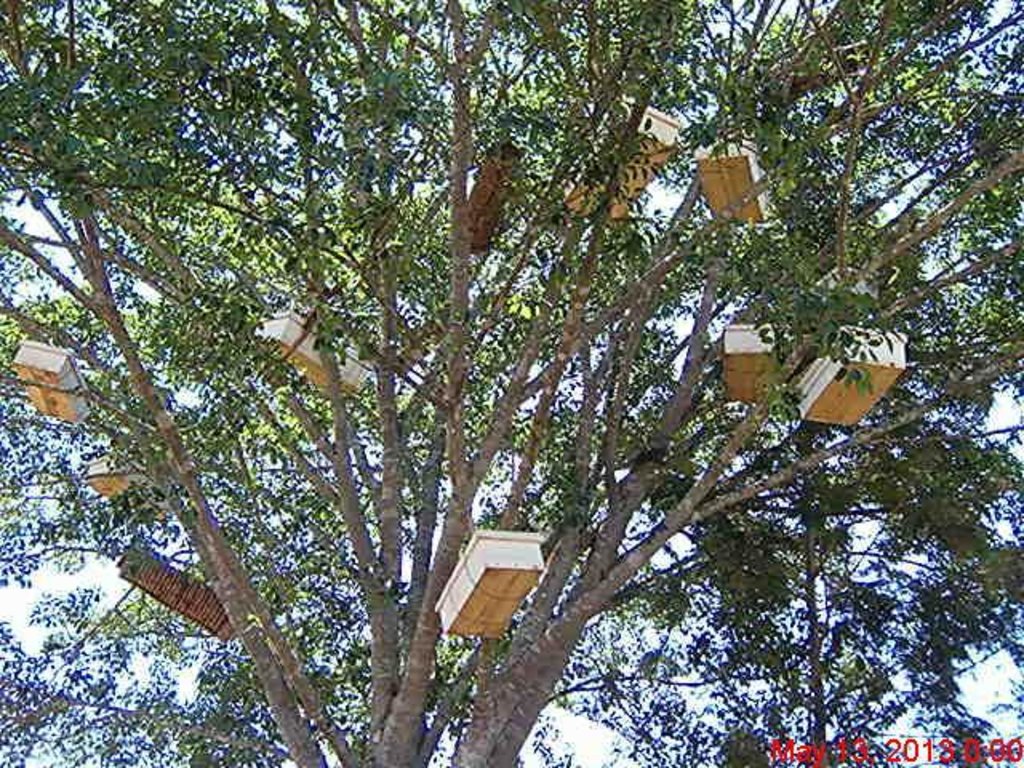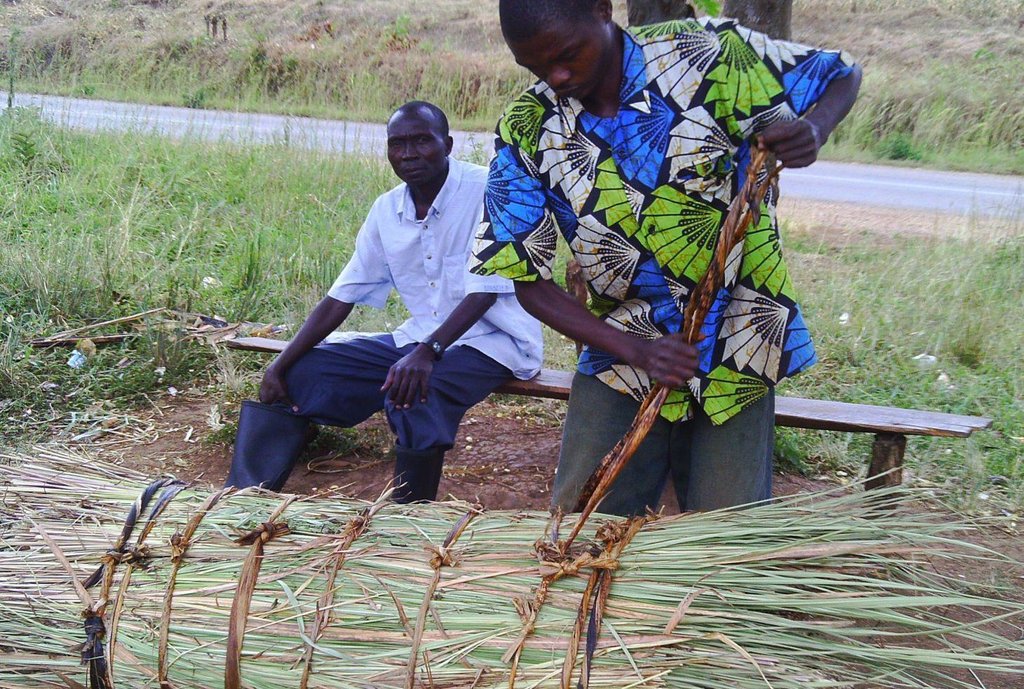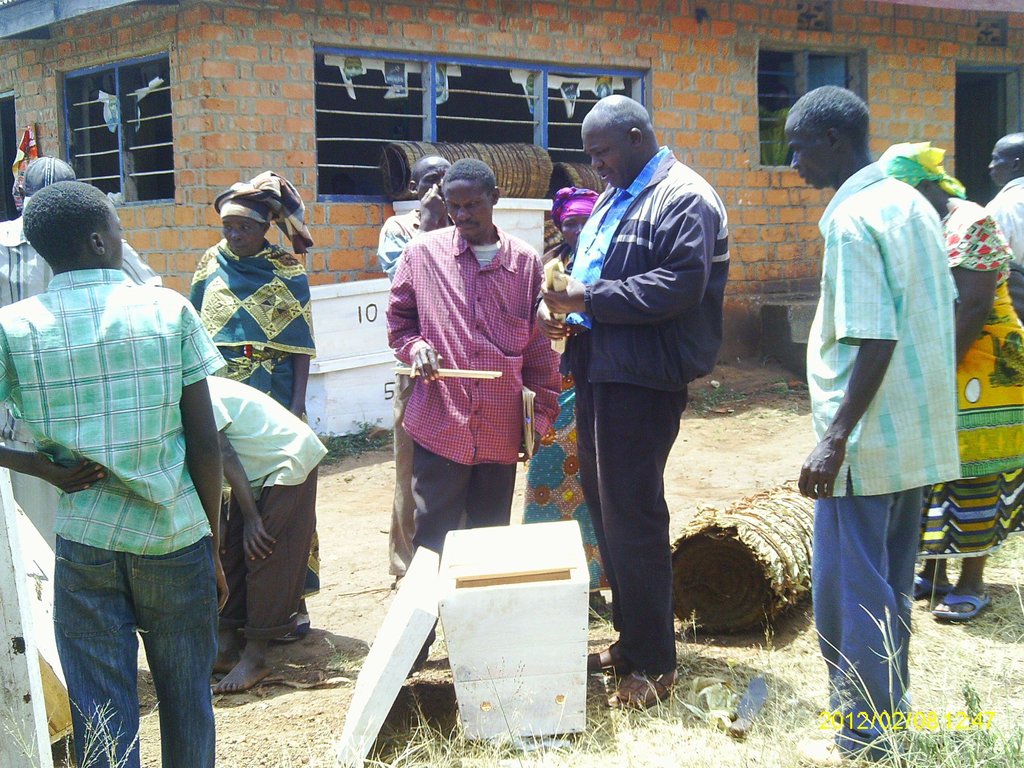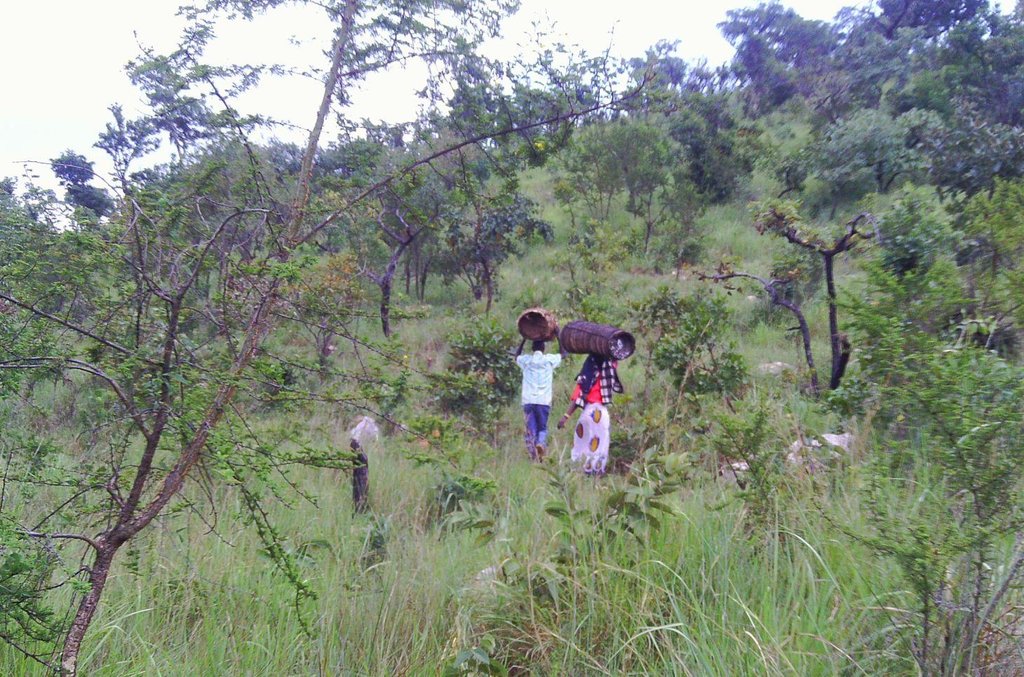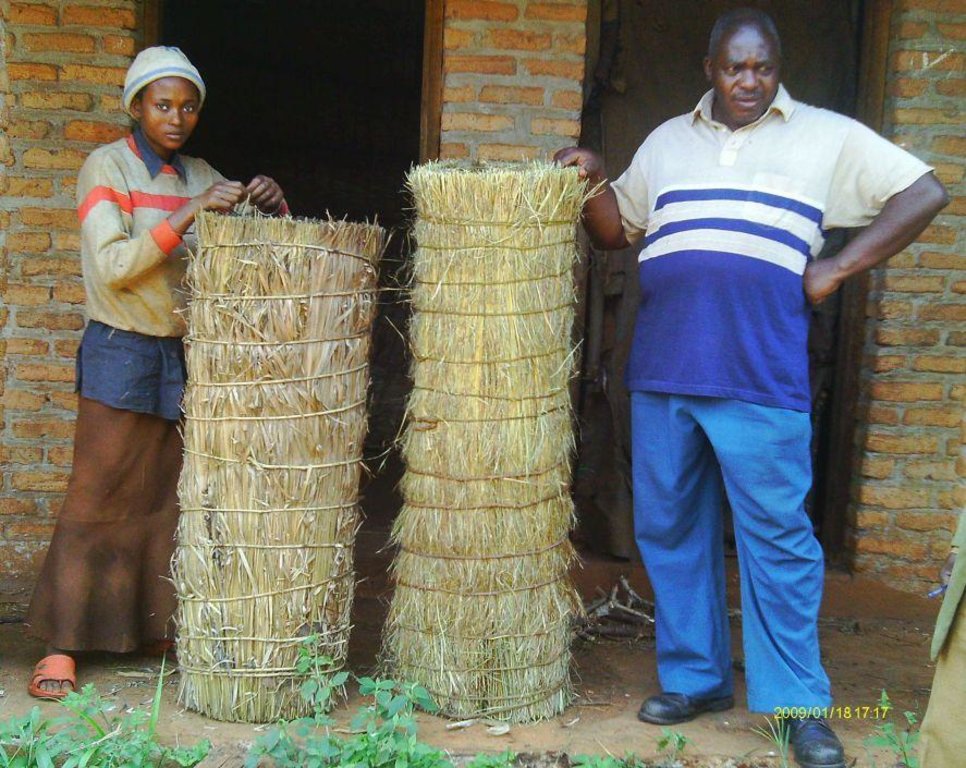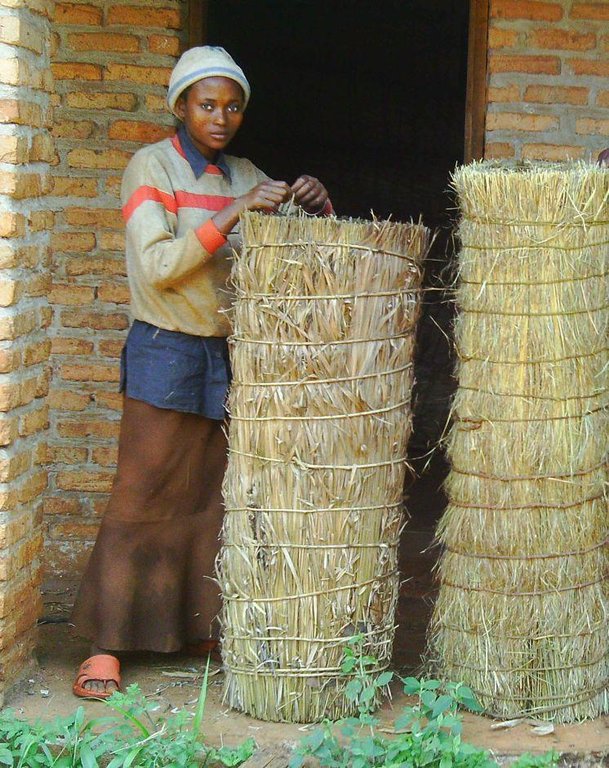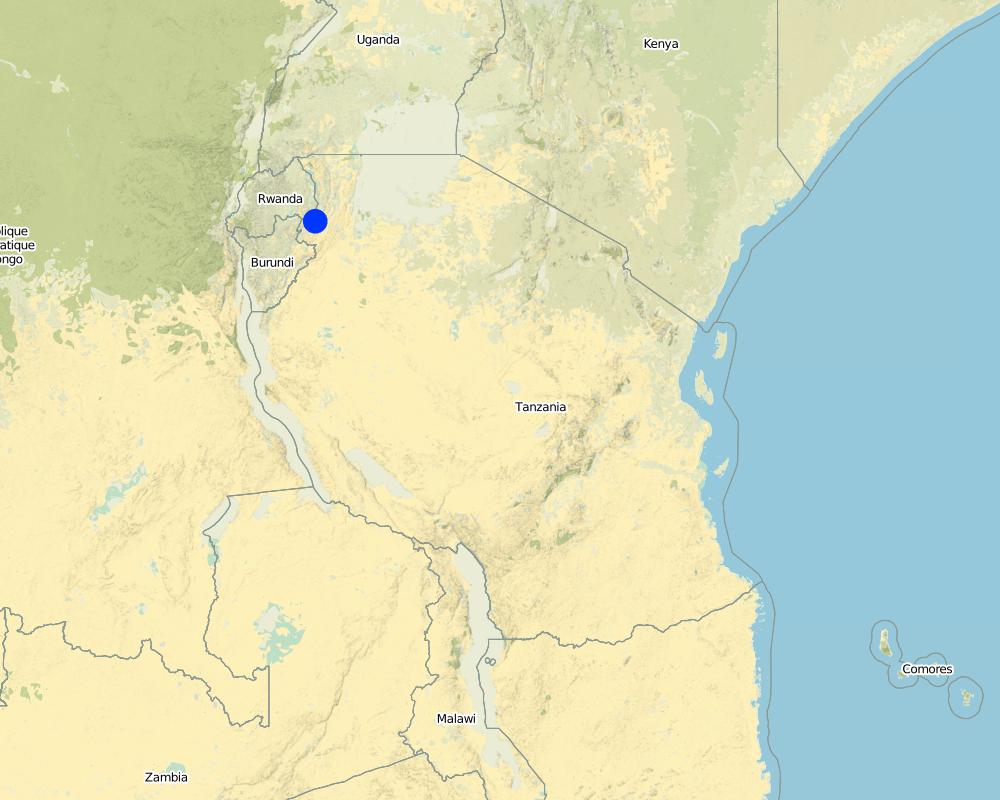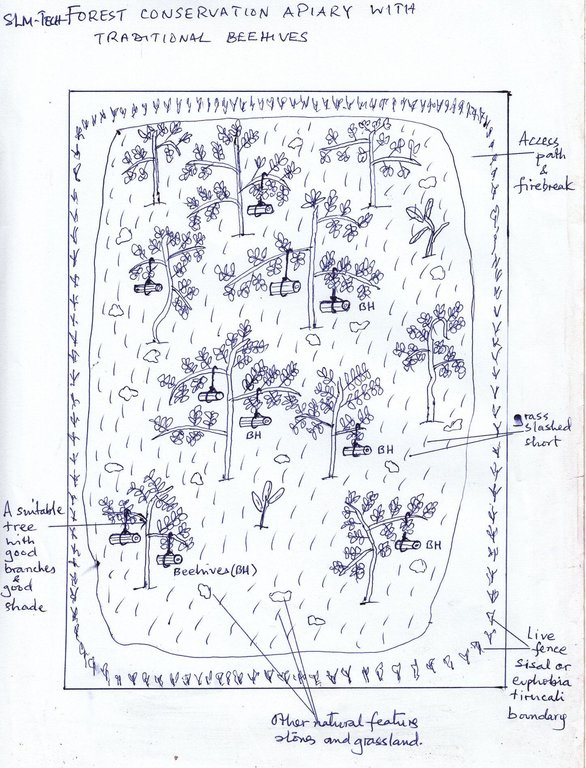Natural forest conservation using apiaries [Танзания]
- Создание:
- Обновить:
- Составитель: Philip Ileta
- Редактор: –
- Рецензенты: David Streiff, Alexandra Gavilano
Utunzaji misitu kwa kufuga nyuki (swahili),
technologies_1152 - Танзания
Просмотреть разделы
Развернуть все Свернуть все1. Общая информация
1.2 Контактные данные специалистов и организаций, участвующих в описании и оценке Технологии
Специалист по УЗП:
Government:
Waluce Michael
Ngara District Council
Танзания
Government:
Mugishagwe Wilson
Ngara District Council
Танзания
Government:
Sangatati Josephat
Ngara District Council
Танзания
Специалист по УЗП:
Kaihura Fidelis
K-TAMP
Танзания
Название проекта, содействовавшего документированию/оценке Технологии (если применимо)
The Transboundary Agro-ecosystem Management Project for the Kagera River Basin (GEF-FAO / Kagera TAMP )Название организации (-ий), содействовавших документированию/оценке Технологии (если применимо)
Food and Agriculture Organization of the United Nations (FAO) - ИталияНазвание организации (-ий), содействовавших документированию/оценке Технологии (если применимо)
Ngara District Council (Ngara District Council) - Танзания1.3 Условия, регламентирующие использование данных, собранных ВОКАТ
Составитель и ответственный(-ые) специалист(-ы) согласны с условиями, регламентирующими использование собранных ВОКАТ данных:
Да
1.5 Ссылка на Анкету (ы) по Подходам УЗП (документируется с использованием ВОКАТ)
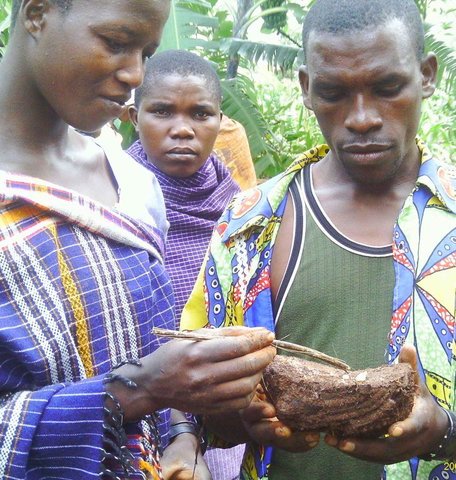
Community intergrated catchment ecosystem management [Танзания]
Adaptive Agro-ecosystem Micro-catchment Approach.
- Составитель: ALLAN BUBELWA
2. Описание Технологии УЗП
2.1 Краткое описание Технологии
Определение Технологии:
Establishment of apiaries in natural forests to retard forest mismanagement and improve honey production
2.2 Подробное описание Технологии
Описание:
This technology has been practiced in Ngara region for the last 50 year and involves construction and upkeep of apiaries for honey and related goods production. The apiaries are constructed by farmers (traditional) or purchased (modern box hieves) and then positioned in a designated forest area that is away from settlements and public places. The apiaries should be hanged on a strong branches of trees with good shade and the honey production process takes from 9 to 12 months.
Purpose of the Technology: It is recommended to apply this technology in the forest that is exposed to deforestation as apiaries help to enhance forest protection. The establishment of apiaries help to improve management of the natural forest while increasing production of honey. This will contribute to the better livelihood of the community and environmental wellbeing.
Establishment / maintenance activities and inputs: The described technology covers area of enclosed 4 hectares of natural forest and establishment of 365 apiaries (338 traditional, 27 box hives); the group of practitioners consist of 10 members (7 male and 3 female). The establishment procedures require: a) identification of forest at risk of degradation, b) ermarcation of the apiary forest, c) creefing of fire breaks d) reparations for and hanging the beehives (traditional and box hives). Maintanance acivities include a) regular slashing of grasses and bushes around the trees with hives b)grading with hand hoes the fire breaks/ roads around the entire forest for fire protection before each dry season c) cleaning of hives,repairs and harvest honey with bee protectives (bee smoker,bee veils,gloves) to eliminate the risks of fire in the forest.Patrol and guard tresspassers d) monitoring pests and diseases
Natural / human environment: Natural occuring tree species include: Combretus spp., Albizia spp., Parinari spp., Pericopsis spp. and Eucalyptus woodlots. Grazing areas are nearby but restricted by village by laws to tress pass in the forest apiary
The aipiaries should be located near permanent water sources because bees use water for honey production and cooling in the hives. Farmers with bee hives become more committed to protect their forest when they hang beehives in the area. Honey is harvested for consumption, trade and medicinal mixtures
The land users are small scale subsistance farmers with poor to average income/wealth,organised as a group of 10 farmers. the population density is between 200-500 people per square km and anual population growth at 2-3% Land ownership is both individual and communal but there are natural forestl areas owned communally through village governments where groups may access temporarily by request to establish environmental friendly activities such as forest apiaries.
2.3 Фотографии, иллюстрирующие Технологию
2.5 Страна/ регион/ места, где применяется Технология, информация о которых собрана в данной Анкете
Страна:
Танзания
Административная единица (Район/Область):
Tanzania
Более точная привязка места:
Ngara District
Охарактеризуйте пространственное распространение Технологии :
- равномерно-однородное применение на определенной площади
Если точная область неизвестна, укажите приблизительную площадь:
- < 0,1 км2 (10 га)
Пояснения:
The described technology covers area of enclosed 4 hectares of natural forest. Applied 365 bee hives (338 traditional, 27 box hives); the practitioners group has 10 members (7male and 3 female)
Map
×2.6 Сколько лет применяется данная Технология
Если год начала применения Технологии достоверно неизвестен, дайте примерную оценку:
- более 50 лет назад (традиционная)
2.7 Внедрение Технологии
Укажите, как именно Технология УЗП была внедрена:
- как часть традиционной системы землепользования (более 50 лет назад)
Пояснения (тип проекта и т.д.):
Beekeeping using local hives is a tradtional practice among the the Hangaza and Shubi ethinic tribes of Ngara district
3. Классификация Технологии УЗП
3.1 Основные цели и задачи реализации Технологии
- защита бассейнов рек (приводораздельной части/ нижнего течения) – в сочетании с другими Технологиями
- сохранение/ повышение биоразнообразия
3.2 Текущий(-ие) тип(-ы) землепользования на территории, где применяется Технология

Леса/ лесистая местность
- Combretus spp., Albizia spp., Parinari spp., Pericopsis spp. and Eucalyptus woodlots
Продукции и услуги:
- Дрова
- Другие продукты леса
- Выпас/ ощипывание молодых побегов и листьев
- Природоохранные/ защитные
Пояснения:
Major land use problems (compiler’s opinion): Deforestation and fire burning during dry season
Reduction of biodiversity
Major land use problems (land users’ perception): Droughts and vegetation burning during dry seasons
Problems / comments regarding forest use: the natural forest has been set aside for establishing bee apiaries therefore only forest managenet operation are conducted(slashing of grass)
3.4 Водоснабжение
Пояснения:
Number of growing seasons per year:
2
Specify:
Longest growing period in days: 120; Longest growing period from month to month: Sept-December; Second longest growing period in days: 90; Second longest growing period from month to month: March to May
3.5 Категория УЗП, к которой относится Технология
- прекращение хозяйственного использования (прекращение доступа к территории, поддержка восстановления)
- Пчеловодство, аквакультура, птицеводство, разведение кроликов, разведение шелкопряда и т.д.
3.6 Мероприятия УЗП, выполняемые в рамках Технологии

Агрономические мероприятия
- А7: Другие

управленческие мероприятия
- У3: Размещение с учетом природных и социально-экономических условий
3.7 Основные проблемы деградации земель, на решение которых направлена Технология

биологическая деградация
- Бр: сокращение растительного покрова
- Бм: утрата местообитаний
- Бк: сокращение количества биомассы
- Бп: разрушительные последствия пожаров
- Бв: потеря природного разнообразия
Пояснения:
Main type of degradation addressed: Bc: reduction of vegetation cover, Bh: loss of habitats, Bq: quantity / biomass decline, Bf: detrimental effects of fires, Bs: quality and species composition /diversity decline
Main causes of degradation: deforestation / removal of natural vegetation (incl. forest fires) (Deforestation through cutting of trees), over-exploitation of vegetation for domestic use (Mainly for firewood), industrial activities and mining (Firewood for burning bricks made from clay), droughts, land tenure (Lack of village land use plans for the area), governance / institutional (Weak natural resources enforcent institution at village level)
Secondary causes of degradation: overgrazing
3.8 Предотвращение и снижение деградации земель, или восстановление нарушенных земель
Укажите цель Технологии по отношению к деградации земель :
- предотвращение деградации земель
- снижение деградации земель
Пояснения:
Secondary goals: mitigation / reduction of land degradation
4. Технические характеристики, мероприятия по практической реализации, вложения и стоимость
4.1 Технический рисунок, иллюстрирующий Технологию
Спецификация (пояснения к техническому рисунку):
Layout of natural apriaries (beehives BH) placed on the trees (good braches with shade), access path and firebreak and live fence.
Ngara district Council
Date: 15 May 2012
Technical knowledge required for field staff / advisors: moderate (To extend knowledge/skills on modern/sustainable beekeeping)
Technical knowledge required for land users: moderate (To add/improve skills on existing indigineous knowledge)
Main technical functions: indirectly minimize deforestation, indirectly increase of biomass
Secondary technical functions: promotion of vegetation species and varieties (quality, eg palatable fodder), control of fires, reduction of dry material (fuel for wildfires), spatial arrangement and diversification of land use
Aligned: -along boundary
Vegetative material: O : other
Change of land use practices / intensity level: Establishment of bee apiaries in forest to add on value/productivity and optimise diversification of land use
Layout change according to natural and human environment: The site should be away at least 400m from nearby settlements/public places
Major change in timing of activities: Twice per year Feb and Sept during honey harvesting season management activities are at their peak.
- Fire breaks established in June /July before dry season commence
Control / change of species composition: Various flora and fauna organisms get time to establish and grow well due to absence of burning
Автор:
Ileta Philip, P.O BOX 30, Ngara
4.2 Общая информация по необходимым вложениям и стоимости
Укажите денежные единицы, использованные для подсчета затрат:
- Доллары США
Укажите среднюю дневную заработную плату наемных работников:
1.25
4.3 Мероприятия, необходимые для начала реализации
| Деятельность | Время (сессия) | |
|---|---|---|
| 1. | Purchase of hives and binding wires | Before dry season |
| 2. | Purchase of beekeeping protectives | Routine |
| 3. | Slashing, screefing bushes and tall grasses; planting hedge around forest boundary | Before dry season |
| 4. | Baiting and hanging apiaries | Before dry season |
| 5. | Purhase of cuttings (euphobia spp) | wet season |
Пояснения:
FOREST CONSERVATION APIARIES technology REVISED PART-November 2013 Description and purpose This is a practice where farmers hang bee hives on branches of trees in the forest and keep the honey bees between six to twelve months whereby honey is already mature for harvesting. Conventional beekeeping methods have introduced other practices such as placing beehives on stands/platforms and keeping many hives in the shelter bee houses whereby honey production can be increased. The trees and forest where bee hives are hanged are normally respected and not felled indiscriminately.
Identification of suitable trees/forest Bees forage on nectar and pollen from flowers of many trees, herbs, shrubs and field plants. However there are specific plant species which are more preferred were bees visit more frequently. The forest or locality with rich biodiversity of the suitable trees/plants is conducive for establishment of a bee apiary. Prominent tree species in this zone include Parinari curatelifolia, Combretum spp, Brachtegia spp, Albizia spp, Acacia spp and cultivated crops such as banana, coffee, and annual crops which include maize, bean and sorghum The source of permanent water should be nearby preferably not more than 3kms because bees use much water in feeding, making honey and to perform cooling in the hives. Demarcation of the apiary forest It is usual for the beekeepers to demarcate the areas so as to inform and alert the community members the existence of the beehives. The demarcation signs may involve partially debarking part of the stem bark of the border trees. The use of colour paints, planting of hedge rows and other boundary marker plants are increasingly becoming popular around many forest apiaries. The common plants for live fence include Euphorbia tirucali, Agaves sisalana and Dovyalis caffra. Types of bee hives Common traditional beehives involve log hives, small poles/withies hives, straw hives, calabashes and clay pots. The use of modern box hives has increased in recent years mainly due to development projects support in modern beekeeping methods. Local hives are cheap but not durable limited to one to three years lifespan and the production is low compared with box hives which may last for ten or more years under good care. Preparations for hanging the beehives i) Bait materials Farmers utilize some materials to attract bee colonies establish in the hives. These include smoking or burning of dry honey combs and rubbing of beeswax inside the hives. Other methods involve sprinkling of either maize flour, cassava flour, raw honey or sugar. The use of many types of herbs and other less known substances(less revealed) to rub and smoke in the beehives before hanging is observed to be more effective in some communities. Some traditional beekeepers have become popular and earn money and respect through providing such services .The swarming periods which normally happen in January/Feb and Mid August/ Sept are suitable for hanging the beehives because it may not take long time to pocess the bee colonies ii) Ropes and tree climbing devices The hives has to be carried to the apiary and be hanged up on a tree branch. This may involve transporting the beehives using any transport means and carry on head load for some distance depending on accessibility and the location of the forest apiary. One or two person has to climb the tree and others remain on the ground to lift the hive. The hive is round bound with strong tree bark ropes before hanging The use of sisal ropes and binding wires have replaced the traditional methods to tie and fix the hives in modern beekeeping apiaries. A tall ladder may be helpful to assist in climbing of tall trees in case of aged individuals. The bee shelter house/huts and hive stands These are normally located in the forest apiary and constructed with local materials especially tree poles, straws and thatched on top roof with dry grass or other leafy vegetation such as banana, coconut and many others plants depending on availability. The hut walls are left open without covering the round walls with earth to facilitate cooling with the fresh air movements. The bee hives are placed on top of each other on the 1.2 m high erected tree poles stands. This practice enables to have many bee hives in one house which are easy to manage and protect provided the surrounding flora has good potential of bee forage plants. Water and sugars may be provided in special containers as extra feeds during bad weather conditions
4.4 Вложения и затраты, необходимые для начала реализации
| Опишите затраты | Единица | Количество | Затраты на единицу | Общая стоимость на единицу | % затрат, оплаченных землепользователями | |
|---|---|---|---|---|---|---|
| Оплата труда | Slashing, screefing bushes and tall grasses | persons/day | 100,0 | 0,63 | 63,0 | 100,0 |
| Оплата труда | Baiting and hanging apiaries | persons/day | 100,0 | 0,63 | 63,0 | 100,0 |
| Оборудование | Hives and binding wires | pieces | 400,0 | 2,25 | 900,0 | 50,0 |
| Оборудование | Beekeeping protectives | sets | 4,0 | 93,75 | 375,0 | 80,0 |
| Посадочный материал | Cuttings | bundles | 200,0 | 0,3 | 60,0 | 100,0 |
| Общая стоимость запуска Технологии | 1461,0 | |||||
| Общие затраты на создание Технологии в долларах США | 1461,0 | |||||
Пояснения:
Duration of establishment phase: 2 month(s)
4.5 Поддержание/ текущее обслуживание
| Деятельность | Сроки/ повторяемость проведения | |
|---|---|---|
| 1. | Slashing grasss,bushes and firebreaks | Before dry season |
| 2. | Apiaries repair | Regular |
| 3. | Monitoring of bee pests and diseases | Regular |
Пояснения:
Bush fire control This is done before the onset of the dry season by establishment of firebreaks around the apiary and slashing short the tall grass and other unwanted vegetation in the apiary forest. Cleaning, repairng and fixing the beehives The beehives that have become loose ,damaged or fallen due to strong winds, rains and disturbance by intruders or animals and birds requires replacement or renovations. In many cases pests such as ants, termites and rodents attack bees and make them abandon the hive. Such hives require repairs and cleaning inside before another bee colony can establish Honey harvesting. There is usually one major honey flow season starting May/June to Sept/October in most places, but another minor season may occur in February depending on the abundance of flowering in the previous season. Traditional honey harvesting equipments and tools include clay pots and other local containers, a hive knife and a smoking/burning grass appliance like torch to kill or scare away the bees. Modern beekeeping make use of special set of equipments and protective clothes that include an overall, a veil, a hat, a bee smoker, gloves, boots and hive tool. During harvesting the last two to three combs of honey are left in the hive to enable the colony continue to feed and resume manufacture honey for the following season Honey processing, packaging and marketing Raw honey is strained and filtered from the chopped honey combs through a clean linen or cotton cloth. The honey storage devices include plastic buckets, jerry cans and small (0.5 to 1 litre) plastic or glass bottles which sales between 2 to 4 US dollars at roadsides in the local market. Uses of honey The sweet and delicious fluid becomes ready for consumption or sale. There are many other uses which include brewing, medicine, in cosmetics, making candles and shoe shine pastes. Bees wax is obtained after boiling and cooling the filtered honey combs juice. Good quality raw honey should be light brown in colour, free from impurities such as any dirty, bee legs, wings and less pollen. Honey can be stored for many years due to its bactericidal and bacterial static properties. Boiled honey is of less quality, light in density, colour and loses most of its chemical and medicinal properties Philip Ngara Tanzania
4.6 Стоимость поддержания/ текущего обслуживания ( в год)
| Опишите затраты | Единица | Количество | Затраты на единицу | Общая стоимость на единицу | % затрат, оплаченных землепользователями | |
|---|---|---|---|---|---|---|
| Оплата труда | Slashing grasss, bushes and firebreaks | persons/day | 60,0 | 1,25 | 75,0 | 100,0 |
| Оплата труда | Apiaries repair | persons/day | 20,0 | 0,8 | 16,0 | 100,0 |
| Оплата труда | Monitoring of bee pests and diseases | persons/day | 20,0 | 0,8 | 16,0 | 100,0 |
| Общая стоимость поддержания Технологии | 107,0 | |||||
| Общие затраты на поддержание Технологии в долларах США | 107,0 | |||||
Пояснения:
Machinery/ tools: Matchets,Slashers,Hoes,,Ropes,ladder for climbing trees.Binding wires
labour per hectare year 2011
tools per piece/each year 2011
4.7 Наиболее значимые факторы, влияющие на стоимость затрат
Опишите наиболее значимые факторы, влияющие на стоимость затрат:
High prices of equpipment an (especially box hives) and labour
5. Природные и социально-экономические условия
5.1 Климат
Среднегодовое количество осадков
- < 250 мм
- 251-500 мм
- 501-750 мм
- 751-1000 мм
- 1001-1500 мм
- 1501-2000 мм
- 2001-3000 мм
- 3001-4000 мм
- > 4000 мм
Пояснения/ комментарии по осадкам:
Bimodal-(sept to december)and Feb to May/June
Агроклиматическая зона
- Умеренно-влажная
Thermal climate class: tropics. Hot months(June,July,August,September),cold months(March,April),cool months(May,October)
5.2 Рельеф
Склоны (преобладающие):
- пологие (0-2%)
- покатые (3-5%)
- покато-крутые (6-10%)
- крутые (11-15%)
- очень крутые (16-30%)
- чрезвычайно крутые (31-60%)
- обрывистые (>60%)
Формы рельефа:
- плато/ равнины
- гребни хребтов/холмов
- склоны гор
- склоны холмов
- подножья
- днища долин
Зона высотной поясности:
- 0-100 м над уровнем моря
- 101-500 м н.у.м.
- 501-1000 м н.у.м.
- 1001-1500 м н.у.м.
- 1501-2000 м н.у.м.
- 2001-2500 м н.у.м.
- 2501-3000 м н.у.м.
- 3001-4000 м н.у.м.
- > 4 тыс. м н.у.м.
Комментарии и дополнительные сведения по условиям рельефа/ топографии :
Slopes on average: The technology is not affected with slope variations
Landforms: The site of the forest apiary is located on hill slopes
5.3 Почвы
Средняя мощность почв:
- поверхностные (0-20 см)
- неглубокие (21-50 см)
- умеренно глубокие (51-80 см)
- глубокие (81-120 см)
- очень глубокие (> 120 см)
Гранулометрический состав (верхнего горизонта):
- средние фракции (суглинистый, супесчаный)
Содержание органического вещества в верхнем горизонте:
- среднее (1-3%)
Если возможно, приложите полное описание почв или укажите доступную информацию, например тип почв, рH/ кислотность почв, ёмкость катионного обмена, содержание азота, содержание солей и т.д.
Soil depth on average: The depth of soil affects the vigour of grass,trees and other vegetation thus amount of biomass available for fire threat during fire season,the labour required for maintanance etc
Soil fertility is medium
Soil drainage / infiltration is medium
Soil water storage capacity is medium
5.4 Доступность и качество воды
Уровень грунтовых вод:
> 50 м
Доступность поверхностных вод:
хорошая
Качество воды (без обработки):
питьевая вода хорошего качества
Комментарии и дополнительная информация по качеству и количеству воды:
Ground water table: On hill slopes
Water quality (untreated): The site for good drinking water is located some 400m proximal to the natural spring water source used for domestic supply and the Ruvuvu river is not far approximatle 2.kms. Poor drinking water at valley bottoms and wetlands nearby (4kms) and water for agricultural use only in wetlands, is used seasonally for dry season agriculture
5.5 Биоразнообразие
Видовое разнообразие:
- средняя
Комментарии и дополнительная информация по биоразнообразию:
Degraded mostly by fire,overcutting of trees for firewood
5.6 Характеристика землепользователей, применяющих Технологию
Рыночная ориентация производства:
- натуральное хозяйство (самообеспечение)
- смешанный (натуральный / коммерческий)
Доходы из других источников:
- < 10% всех доходов
Относительный уровень достатка:
- плохой
- средний
Индивидуальное или коллективное хозяйство:
- группа/ община
Пол:
- мужчины
Укажите другие важные характеристики землепользователей:
Land users applying the Technology are mainly common / average land users
Difference in the involvement of women and men: -Very few women were invoved trditionally-due to climbing of trees to hang bee hives and honey harvesting.These are activities usually performed by men
-Women perform slashing of grass, processing of honey and marketing of products
Population density: 100-200 persons/km2
Annual population growth: 2% - 3%; 3%
20% of the land users are average wealthy and own 50% of the land.
80% of the land users are poor and own 50% of the land.
Off-farm income specification: A small number of people practice off farm activities in burnt bricks making and petty trade
Market orientation of production system: Honey for market, very little for consumption
5.7 Средняя площадь земель, используемых землепользователями с применением Технологии
- < 0,5 га
- 0,5-1 га
- 1-2 га
- 2-5 га
- 5-15 га
- 15-50 га
- 50-100 га
- 100-500 га
- 500-1000 га
- 1000-10000 га
- > 10000 га
Считается ли это мелким, средним или крупным хозяйством (по местным масштабам)?
- мелкое
Пояснения:
Average area of land owned or leased by land users applying the Technology: Also 1-2 ha
The population density is low with a large ares of forests(55% of total area) still marginally disturbed
5.8 Собственность на землю, права на земле- и водопользование
Землевладелец:
- общинная/ поселковая
- коллективная
Право землепользования:
- общинное (контролируемое)
Пояснения:
The group was allocated the forest area of approximately 4 ha by village govt to establish the forest apiary.
5.9 Доступ к базовым услугам и инфраструктуре
медицинское обслуживание:
- плохой
- средний
- хорошая
образование:
- плохой
- средний
- хорошая
технические консультации:
- плохой
- средний
- хорошая
занятость (вне хозяйства):
- плохой
- средний
- хорошая
рынки:
- плохой
- средний
- хорошая
электроснабжение:
- плохой
- средний
- хорошая
транспорт и дорожная сеть:
- плохой
- средний
- хорошая
водоснабжение и канализация:
- плохой
- средний
- хорошая
финансовые услуги:
- плохой
- средний
- хорошая
6. Воздействия и заключительные положения
6.1 Влияние Технологии УЗП в пределах территории ее применения
Социально-экономическое воздействие
Продуктивность
производство сельскозяйственных культур
производство древесины
Комментарий/ пояснения:
Trees not scotched by fire,trees growing smoothly
риск потери продуктивности
разнообразие продукции
площадь, используемая для производства продукции
Комментарий/ пояснения:
Increased productivity per area of forest
производство электроэнергии
Комментарий/ пояснения:
Retention of permanent vegetation cover
Доходы и затраты
доходы хозяйства
Комментарий/ пояснения:
Increased opportunities for crop pollination in nearby fields
разнообразие источников дохода
Комментарий/ пояснения:
Honey and beeswax primary products for sale from apiary
Социальное и культурное воздействие
продовольственная безопасность/ самообеспечение
Комментарий/ пояснения:
Sale of bee products during good harvest to contribute to household income
состояние здоровья
Комментарий/ пояснения:
Honey demand in herbal mixtures for diseases cure
культурные возможности
Комментарий/ пояснения:
Reduce fire incidences
возможности отдыха и рекреации
Комментарий/ пояснения:
The forest is beautiful to visit
местное самоуправление
Комментарий/ пояснения:
Group cohesion due to common interests/income opportunities
знания в области УЗП/ деградации земель
смягчение конфликтов
livelihood and human well-being
Комментарий/ пояснения:
Increased income for the group members through sale of bee products honey as food and for diseases treatments members have attended various training for forest management and modern beekeeping members have incresed access to loans and credit organisations
dangers of bee attack
Комментарий/ пояснения:
When tresspassing people and animals or during swarming and harvesting honey
Экологическое воздействие
Водный цикл/ поверхностный сток
количество воды
поверхностный сток
Комментарий/ пояснения:
Retention of permanent vegetation cover
испарение
Комментарий/ пояснения:
Retention of permanent vegetation cover
Почвы
влажность почв
Комментарий/ пояснения:
Retention of permanent vegetation cover
почвенный покров
Комментарий/ пояснения:
Retention of permanent vegetation cover
утрата почв
Комментарий/ пояснения:
Retention of permanent vegetation cover
уплотнение почв
Биоразнообразие: растительность, животный мир
биомасса/ содержание углерода в надземной биомассе
Комментарий/ пояснения:
Retention of permanent vegetation cover
разнообразие флоры
полезные виды
Комментарий/ пояснения:
Retention of permanent vegetation cover
разнообразие местообитаний
Комментарий/ пояснения:
Retention of permanent vegetation cover
Климат и снижение риска стихийных бедствий
выбросы углекислого газа и парниковых газов
риск пожаров
Комментарий/ пояснения:
Retention of permanent vegetation cover
скорость ветра
Комментарий/ пояснения:
Retention of permanent vegetation cover
Другие экологические последствия
pollination of forest and crops
6.3 Подверженность и чувствительность Технологии УЗП к постепенным изменениям климата и экстремальным погодным явлениям/ стихийным бедствиям, связанным с изменением климата (в понимании землепользователей)
Постепенное изменение климата
Постепенное изменение климата
| Сезон | увеличение или уменьшение | Насколько успешно Технология справляется с этим? | |
|---|---|---|---|
| среднегодовые температуры | увеличилось | плохо |
Экстремальные явления, связанные с изменением климата (стихийные бедствия)
Стихийные бедствия климатического характера
| Насколько успешно Технология справляется с этим? | |
|---|---|
| засухи | плохо |
Пояснения:
By planting fire tolerant plant species around boundaries of the forest, beehives will be more secure from fire damage and the forest apiary remain with vegetative soil cover -such species includes agaves sisalana,euphobia tirucali etc
6.4 Анализ эффективности затрат
Насколько получаемый результат сопоставим с первоначальными вложениями (с точки зрения землепользователей)?
Эффективность затрат в краткосрочной перспективе:
слабо отрицательное
Эффективность затрат в долгосрочной перспективе:
позитивное
Насколько получаемый результат сопоставим с текущими расходами по поддержанию технологии (с точки зрения землепользователей)?
Эффективность затрат в краткосрочной перспективе:
позитивное
Эффективность затрат в долгосрочной перспективе:
позитивное
Пояснения:
After initial high establishment costs,maintanance costs are minimal and the box hives are durable for at least 10 years when made from durable well seasoned timber
6.5 Внедрение Технологии
- > 50%
Если возможно, дайте количественную характеристику (число домохозяйств и/или площадь применения):
32 households in an area of 10 ha
Среди применяющих Технологию землепользователей, какова доля лиц, применяющих её по собственной инициативе, т.е. без какого-либо материального стимулирования со стороны?
- 11-50%
Пояснения:
17 land user families have adopted the Technology with external material support
Comments on acceptance with external material support: The box hives and beekeeping protectives were subsidies from projects/programmes under NGOs and governemnt support
50% of land user families have adopted the Technology without any external material support
15 land user families have adopted the Technology without any external material support
Comments on spontaneous adoption: Traditional beekeepeing with indigineous knowledge used traditional hives only.Government and some NGO s support improved by availing box hives and modern beekeeping knowledge
Comments on adoption trend: more 4 groups emerging who request for support n the area
6.7 Сильные стороны/ преимущества/ возможности Технологии
| Сильные стороны/ преимущества/ возможности по мнению землепользователей |
|---|
|
Increased income and income sources for farmers How can they be sustained / enhanced? Intergrate modern box hives, processing gears and improve markets for bee products. |
|
Decreased bushfire incidences How can they be sustained / enhanced? Strengthern bylaws administration procedures to punish persons causing bushfires, harvest honey in late evening and during the nights.Use beesmokers during harvesting |
| Сильные стороны/ преимущества/ возможности по мнению составителя или других ключевых специалистов |
|---|
|
Enhanced forest conservation How can they be sustained / enhanced? Improve management/tending activities in the forest and administation of bylaws |
|
Improved vegetation cover How can they be sustained / enhanced? Enrichment planting with suitable bee forage plant species |
|
Incresed income and divesification of income sources How can they be sustained / enhanced? Intergrate modern beekeeping and improved processing of bee products.Construct beehives shelter house in the forest to accomodate more hives |
|
Decrease bush/grassfire incidences How can they be sustained / enhanced? Screefing firebreaks using hand hoes, conduct regular firepatrols during dry season,use proper honey harvesting equipments especially beesmokers. Environmental education and campaigns |
|
Continuous production of honey for consumption,sale and medicine How can they be sustained / enhanced? Reservation of more forests for practicing cormecial beekeeping |
6.8 Слабые стороны/ недостатки/ риски Технологии и пути их преодоления
| Слабые стороны/ недостатки/ риски по мнению землепользователей | Возможные пути их преодоления/снижения? |
|---|---|
| Bee stings for people and livestock | Use of bee protective gears during honey harvesting |
| Regular conflicts with grazing of livestock in the forest during dry season when grass in other areas are already burned-Damaging of beehives by pastoralists | By laws administration and operational |
| Слабые стороны/ недостатки/ риски по мнению составителя или ответственных специалистов | Возможные пути их преодоления/снижения? |
|---|---|
| High costs for box hives and bee protective gears | Intergrate modern box hives with durable traditional hives |
| Require large/extensive aeas/Competing demands especially firewood for energy domestic use/trade and grazing land areas |
By laws administration,Planting trees/woodlots have participatory and operational village land use plans |
| Bee stings for people and livestock | establish forest apiaries away(>400m) from human settlements and public places |
| Danger of falling from trees during hanging of hives and harvesting | Use ropes,ladder and tree climbing devises, |
7. Справочные материалы и ссылки
7.3 Ссылки на соответствующую онлайн-информацию
Название/ описание:
Kagera TAMP Project website
Адрес в сети Интернет:
http://www.fao.org/nr/kagera/en/
Ссылки и модули
Развернуть все Свернуть всеСсылки

Community intergrated catchment ecosystem management [Танзания]
Adaptive Agro-ecosystem Micro-catchment Approach.
- Составитель: ALLAN BUBELWA
Модули
Нет модулей


